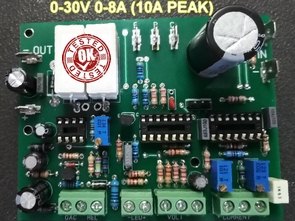
Actually, I implemented the power supply circuit with limited possibilities, but it is sufficient for me, the first tests were done successfully. Since I have a toroidal transformer with an estimated voltage of 250W…300W 2X15VAC, I did the tests with it, and the normal sheet transformer can also have a usable power of at least 300W or more. I installed DC rectifier, filter, relay stage with direct cables (I prepared PCB for these parts of the circuit)
0-30V 0-10A Power Supply Circuit Diagram

The regulated power supply is based on 2 LM723 (UC723), normally LM723 can control current and voltage by itself. In this design, separate LM723 is used for voltage and current part. LM741 opamp is used for AC voltage stabilization.
Power Supply Technical data
Adjustable output voltage from 0v to 30V.
Adjustable output current from 0v to 10A.
fine-tuning over 1 V
Current limitation indicator with LED
Output current: 8A. continuous / 1OA Max.
Maximum ripple 0.5mV RMS
For the 2SC5200 output transistors, I made all the connections with a separate cable. Normally, it is not necessary, but there was no suitable cooler, it was setup for the test (PCB drawing was prepared for the output transistors).
By combining the outputs of the 0.22 OHM 5W equalization resistors, a single thick cable, wire can be used, I used a pull-out resistor, the legs were short, I did not make any additions, I used the cables I disconnected from the pc power supply..
Power Supply Test Video
In the video below, the power supply is set up, short circuit tests, load tests, notes, etc. quickly shown the video is short but very detailed..
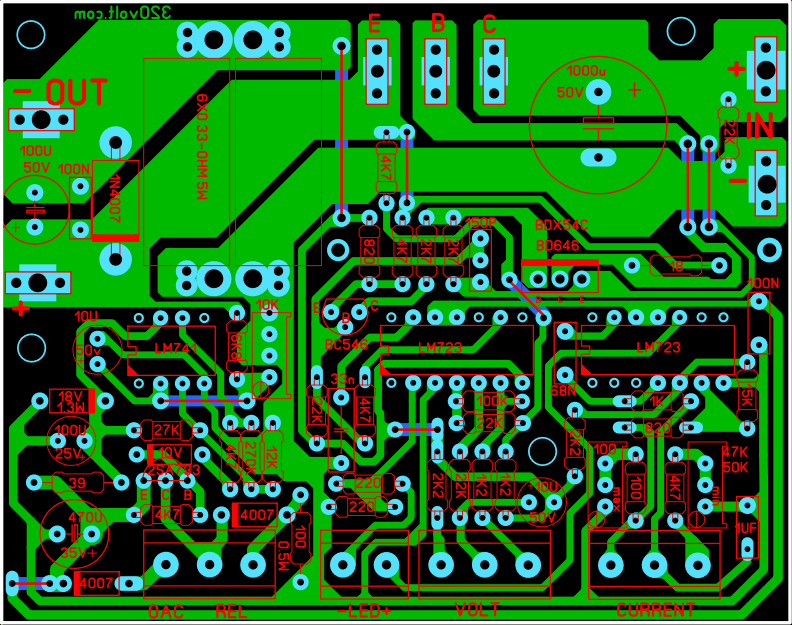

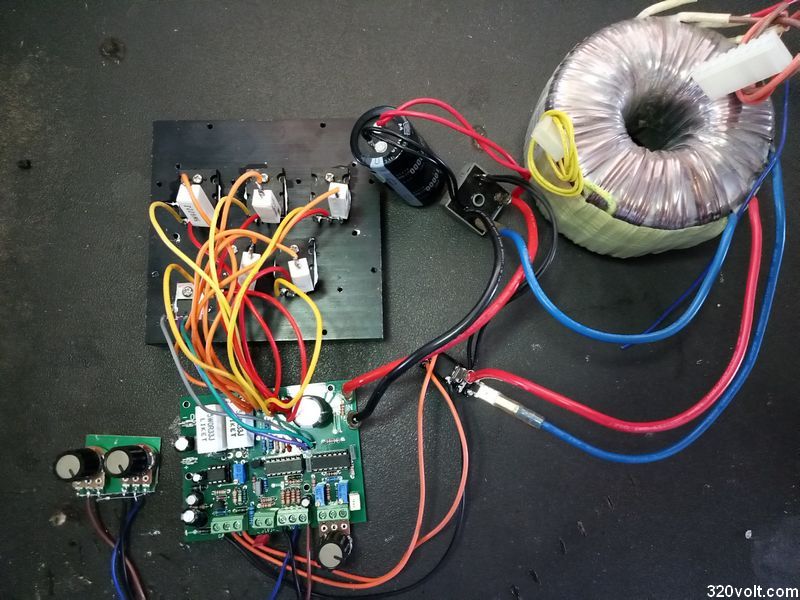
0-30V 10A Power Supply Installation Details
If I could, I would use all low-power resistors with a 1% tolerance on metal film, but since not all values are available, some of them used metal film, so the metal film resistors you see when finished are not circuit specific. If possible, the resistors should be metal film and the pots should be high quality alps brand.
After the material assembly of the power supply control board, I recommend that you clean it with cellosic thinner and check the solders.
I do not use the integrated socket in the circuits I am sure of, but I used the integrated socket in case I tried it for the first time and in case of any problems in the tests.
In the control board material list, MKM type is said for 33nF, 68nF, 1uF fixed capacitors, I used standard polyester type. Voltage values are 63v.
The voltage sensing resistance of the bypass circuit, which is used to reduce the power consumed by the transistors in the power supply circuit, is fixed 8.2K, instead a 10K multi-turn trimpot is used. With an 8.2K resistor, approximately 11V output is also relayed and gives 42V to the input. I set it to be active when the output is between 12v…13v. for example, when we set the output to 13 volts, 42V DC will be applied to the DC input of the circuit, the double winding of the transformer will be used (15VAC+15VAC=30V 30X1.41=42).
As I said, I installed this part directly, but those who do not want to deal with it can use the PCB drawing I prepared. The capacitors can be 4700uf 50v or 6800uf bridge diode 35-50 amperes metal type relay 12V 16 amps.
There is only measurement information about the shunt resistors used for current sensing in the original document. I tried with 0.33ohm 5w resistors that I have, the results are very good. When I connect 1 more 0.33 OHM and with a lower ohm load (3.7-ohm), 8 amps are obtained, but I have no resistor and no load. It did not cause any problems in various current and voltage tests with the materials at hand.
Note: Most likely original shunt resistor value 0.05 Ohm 50mR metal type.
Power Supply Connection Diagram
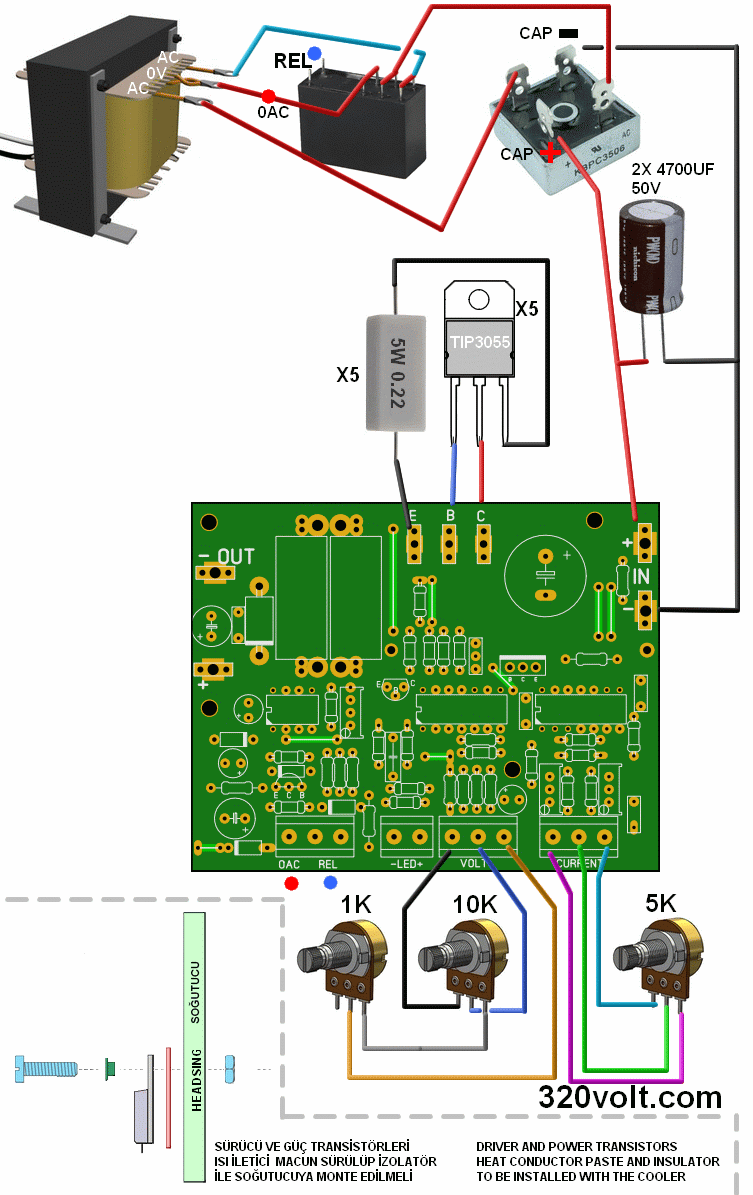
The power supply circuit can be used as 3A, 5A, for example, with 1 piece of TIP3055, it gives about 3 amps. You use 1 piece of 0.22 OHM in the shunt resistor. You should make the min., max current settings accordingly.
Instead of T3 BD646 Transistor, BDX54C can be used. I don’t think a heatsink will be needed for 3 amps, so a thick small heatsink can be used or mounted directly to the main heatsink. The dimensions of the cooler to be used for the output power transistors are in the Velleman K7200 manual file, but it is quite large and difficult to find, you can use a smaller cooler and add a fan instead.
By the way, I had to make a probe for current measurement in the multimeter. Although the measuring instruments say 10A…20A current can be measured, the probes of the multimeter do not carry high currents, they get hot and show incorrect values.
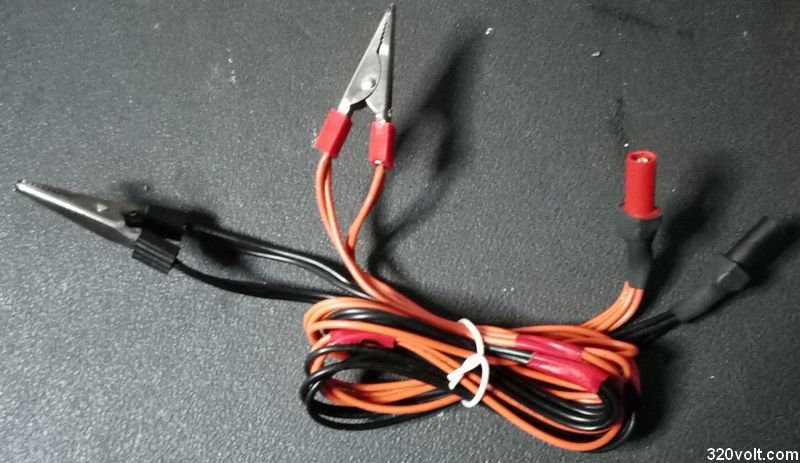
In long-term tests at high currents, the 35A metal bridge diode gets hot. It would be good to install a small heatsink or it can be mounted directly to the main heatsink, but it should be a little far from the transistors. The PCB drawings I prepared for the DC rectifier, filter, relay stage and transistor stage are single-layered so that it is easy to apply, in addition, there are double-layer drawings, you do not need to bother to thicken the paths in double-layer PCB drawings. Do not forget to use heat-conducting paste and insulator in the heatsink assembly of the output TIP3055 transistors of the power supply
Current settings of the power supply
The instructions are translated from the velleman K7200 document. I set random tirimpots for max current and went directly to the application. You can access the original document in the file.
1. Connect an ammeter capable of measuring a minimum of 1OA to the output
2. Set the current limiting potentiometer to maximum
3. Turn the voltage regulator potentiometer (COARSE-KABA) to the intermediate position.
4. Turn the RV1 trimpot all the way to the left (maximum current setting).
5. Turn the RV2 trimpot all the way to the right (minimum current setting).
6. Connect the power supply to the mains (the current limiting LED will be lit. most likely).
7. Carefully adjust RV1 until the ammeter reads 1OA.
8. Set the current adjustment pot to 1A (center position).
9. Carefully adjust the RV2 until the ammeter reads 1 A.
Update Control and DC solid Single PCB
The PCB dimensions of the power supply control board were quite small, I wondered if I could fit the DC floor in a single-storey 100X100 size, I tried to fit it end to end. It works for those who have printed circuit boards from China. It is necessary to fill the AC lines with solder and thicken them.
There are no major changes in the control stage, only the emitter collector jumps of the BDX54C transistor are arranged according to the DC stage, and the 1000uf capacitor has been removed, since the main filter capacitors are directly on the board, this capacitor is not needed in the original, but the DC and control stage combination is made with cables, so cable losses are well thought about .
The new PCB drawing has been added to the file. 4700UF capacitors are ideal for 8 amps. If there will be frequent and long-term use with 10 amps, 6800UF can be used. The area on the PCB, capacitor diameter is 25.5mm. The new generation capacitor sizes are getting smaller, if possible, it would be better to use 6800UF.
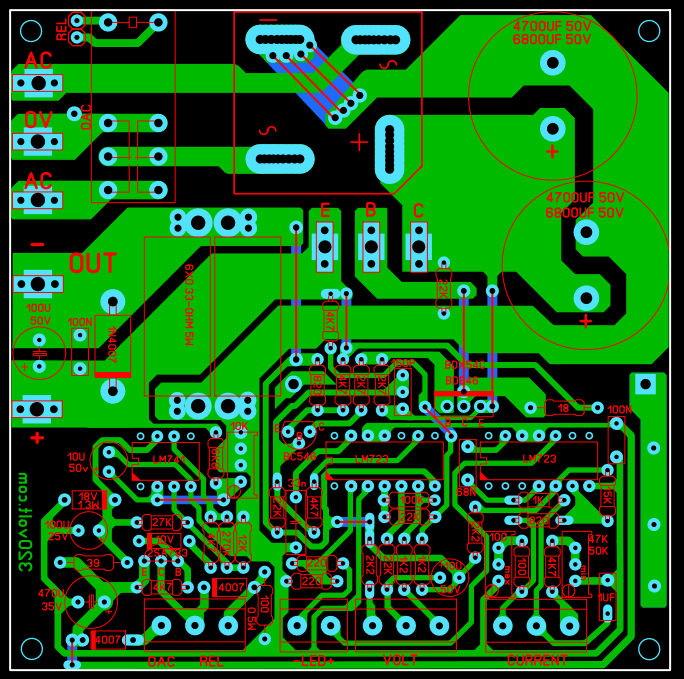
Pictures from our 320volt.com Readers running the circuit;
Şifre-Pass: 320volt.com
Publication date: 2021/09/30 Tags: power electronic projects, power supply circuit, power supply project
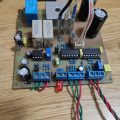
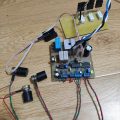
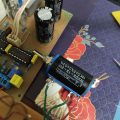
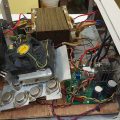
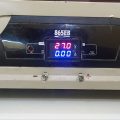
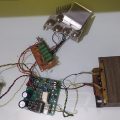
Where can I get the PCB for the volts & current controler.
Hi,
All files (pcb) are shared you will do it yourself DIY 🙂
Hello,
Can’t open with Kicad :/
Hello, You can open it with sprint layout
There is nothing inside the downloaded file
I checked and I don’t see any problem. ?
thanks for your response. I download but I can’t find any picture of the board
Inside the file there are two folders v1 and v2 which contain nothing
I don’t know very well, do I need a special software to open the file?
Can you do me a favor and post the picture of the pcb and the layout of the parts. Thank you
Hi,
download https://www.rarlab.com/download.htm (for compressed file) and https://www.abacom-online.de/updates/Sprint-Layout60_Viewer.exe (pcb imaging, printing program)
Sorry, I’m taking your time. Unfortunately, I couldn’t find anything from the downloads. After opening the download file, I saw a checkered environment.
Hi,
send a screenshot
https://s27.picofile.com/file/8458855884/2.PNG
https://s27.picofile.com/file/8458856076/44.PNG